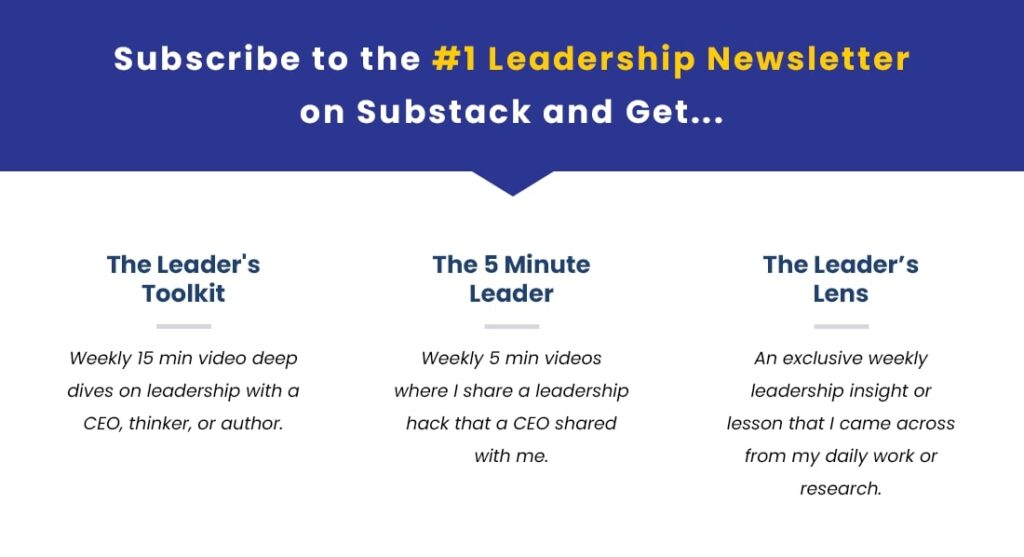The Leader’s Lens is a weekly guide that I write for paid subscribers of Great Leadership. If you are already a paid subscriber then THANK YOU for your support. If you are not a paid subscriber you’re missing out! Each week you will get access to leadership hacks I learned from top CEOs, deep dive interviews, and guides just like this one. This is a preview of the article, subscribe to get the rest. Upgrade To Paid
The traditional role of a middle manager has always been to link the employees on the ground floor with the senior leaders of the organization. Middle managers were the eyes, ears, and the hands of the higher ups. Meaning, they were responsible for keeping the engine running, reporting any issues, and making sure that the strategic direct of the higher-ups was being implemented.
This approach made sense in a word that was linear, where growth was relatively gradual, and when things weren’t changing all that quickly. This approach especially made sense in a world where we didn’t have access to technology like generative AI (think chatGPT).
A mid-level management role is a tough spot to be in because on the one hand in you aren’t on the ground floor doing the actual work yet you also aren’t senior enough to develop your own strategy and vision. You’re caught somewhere in between.
Mid-level managers also have a bad reputation…remember this guy from Office Space? That’s who most people think of when they here “manager”.
To make matters worse, organizations like Meta, Amazon, Salesforce, and Alphabet have been slashing mid-level manager roles in an effort to make things more streamlined and less hierarchical in the name of efficiency and productivity.
However, there needs to be balance between focusing on short-term efficiency and productivity and long-term growth. I’m in complete favor in making organizations less hierarchical, however, simply firing or demoting people misses the point.
A recent McKinsey article states this nicely:
Companies treat middle management as a catchall, requiring managers to spend much of their time handling non-managerial work and navigating organizational bureaucracy rather than allowing them to focus on the most important role at an organization: fostering talent.
As I wrote in my upcoming book, Leading With Vulnerability, the greatest leaders can bring together two critical aspects: competence and connection.

The rest of the post for paid subscribers will explore solutions for the future of mid-level management. Even if you aren’t a paid subscriber you can still pre-order a copy of my new book!

Comments